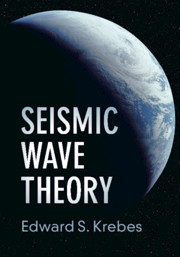Book contents
- Frontmatter
- Dedication
- Contents
- Preface
- Symbols
- 1 Vectors, Tensors, and Fourier Transforms
- 2 Stress, Strain, and Seismic Waves
- 3 Reflection and Transmission of Plane Waves
- 4 Surface Waves, Head Waves, and Normal Modes
- 5 Waves in Heterogeneous Media
- 6 Data Transformations
- 7 Synthetic Seismograms
- 8 Seismic Migration
- 9 Plane Waves in Anisotropic Media
- 10 Plane Waves in Anelastic Media
- Answers to Selected Exercises
- References
- Index
6 - Data Transformations
Published online by Cambridge University Press: 15 March 2019
- Frontmatter
- Dedication
- Contents
- Preface
- Symbols
- 1 Vectors, Tensors, and Fourier Transforms
- 2 Stress, Strain, and Seismic Waves
- 3 Reflection and Transmission of Plane Waves
- 4 Surface Waves, Head Waves, and Normal Modes
- 5 Waves in Heterogeneous Media
- 6 Data Transformations
- 7 Synthetic Seismograms
- 8 Seismic Migration
- 9 Plane Waves in Anisotropic Media
- 10 Plane Waves in Anelastic Media
- Answers to Selected Exercises
- References
- Index
Summary
This chapter looks at how seismic wave theory relates to transforming seismic wave travel-time data into different representations such as the frequency domain (achieved with a 1D Fourier transform), the frequency-wavenumber domain (achieved with a 2D Fourier transform), and the tau-p domain (or intercept time–ray parameter domain). The reason for transforming seismic data into different domains is that the data may be easier to analyze and interpret in other domains. Furthermore, 1D and 2D filtering can be done often more conveniently in the frequency and frequency-wavenumber domains. Also covered are topics related to the tau-p domain, namely, slant-stacking, plane wave decomposition, and the Hilbert and Radon transforms.
Keywords
Information
- Type
- Chapter
- Information
- Seismic Wave Theory , pp. 230 - 241Publisher: Cambridge University PressPrint publication year: 2019
